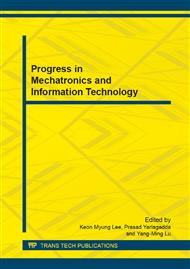p.553
p.558
p.562
p.566
p.573
p.578
p.585
p.592
p.599
Analyzing of the Near-Field Shielding Effectiveness of the Cylindrical Cavity with Apertures
Abstract:
The equivalent circuit model of shielding effectiveness of the cylindrical cavity with apertures against the near-field waves of electric dipole is established. The analytical formulas for approximately calculating the shielding effectiveness are given by the adjusted transmission line method. It is shown that the near-field shielding effectiveness of a cylindrical cavity with apertures is far inferior to that of far-field. The near-filed SE of the cylindrical cavity increases with the distance between the diploe and the apertured cavity, but when the distance is greater than a half wavelength of the electromagnetic disturbances, the SE tends to be saturated. In the cavity, the electric SE increased with the distance of observation points to the apertures. Results of the adjusted TLM are in good agreement with the CST simulation results.
Info:
Periodical:
Pages:
573-577
Citation:
Online since:
November 2013
Authors:
Price:
Сopyright:
© 2014 Trans Tech Publications Ltd. All Rights Reserved
Share:
Citation:


